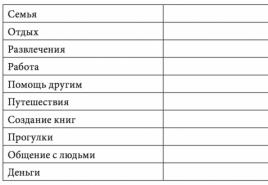The solar wind is a continuous stream of particles. Real Time Solar Wind Imaging (Online)
The sun is the source of a constant stream of particles. Neutrinos, electrons, protons, alpha particles, and heavier ones atomic nuclei all together constitute the corpuscular radiation of the Sun. A significant part of this radiation is a more or less continuous outflow of plasma, the so-called solar wind, which is a continuation of the outer layers of the solar atmosphere - the solar corona. Its speed near the Earth is usually 400–500 km / s. A stream of charged particles is ejected from the Sun through coronal holes - regions in the Sun's atmosphere with a magnetic field open to interplanetary space.
The first measurements of the solar wind were made in 1959 on the Luna-9 spacecraft. In 1962, "Mariner-2", heading for Venus, made observations of the solar wind and obtained the following results: the solar wind speed varied in the range from 350 m / s to 800 m / s, the average concentration of the solar wind was 5.4 ions per 1 cm3 , ion temperature 160,000 K. Average magnetic field strength 6 * 10–5 oersted.
The international space station SOHO has found out a lot about the solar wind. It turned out that it carries elements such as nickel, iron, silicon, sulfur, calcium, chromium.
The sun rotates with a period of 27 days. The trajectories of the solar wind particles moving along the lines of magnetic field induction have a spiral structure due to the rotation of the Sun. As a result of the rotation of the Sun, the geometric shape of the solar wind flow will be an Archimedean spiral, resembling the shape of a stream of water from a garden hose rotating around its axis.
On days of solar storms, the solar wind increases sharply. It calls forth the auroras and magnetic storms on Earth, and astronauts should not go into outer space at this time.
Under the influence of the solar wind, comet tails are always directed away from the Sun. Spacecraft Voyager has detected the solar wind even beyond Pluto's orbit. In fact, we live in a giant heliosphere formed by the solar wind, although we are protected from it by the Earth's magnetic field.
The sun is a powerful source of radio emission. Interplanetary space is penetrated by centimeter radio waves emitted by the chromosphere, and longer waves emitted by the corona.
If in visible rays the Sun radiates relatively stable (changes occur by fractions of a percent), then in the radio range the radiation can change hundreds and even thousands of times. Radio emission from the Sun has two components - constant and variable. The constant component characterizes the radio emission from the quiet Sun. The solar corona emits radio waves as an absolutely black body with a temperature of T \u003d 106 K. The variable component of the solar radio emission manifests itself in the form of bursts, noise storms. Noise storms last from several hours to several days. 10 minutes after a strong solar flare, the radio emission from the Sun increases thousands and even millions of times compared to the radio emission from the quiet Sun and lasts from several minutes to several hours. This radio emission is of a non-thermal nature.
sunny wind
- a continuous flow of plasma of solar origin, spreading approximately radially from the Sun and filling the solar system up to heliocentric. distances ~ 100 AU S.v. formed when gasdynamic. expansion into interplanetary space. At high temperatures that exist in the solar corona (K), the pressure of the overlying layers cannot balance the gas pressure of the corona matter, and the corona expands.The first evidence of the existence of a constant flow of plasma from the Sun was obtained by L. Birman (Germany) in the 1950s. on the analysis of forces acting on the plasma tails of comets. In 1957, Y. Parker (USA), analyzing the conditions of equilibrium of corona matter, showed that the corona cannot be under hydrostatic conditions. equilibrium, as previously assumed, but should expand, and this expansion under the existing boundary conditions should lead to the acceleration of coronal matter to supersonic speeds.
Average characteristics of S. are given in table. 1. For the first time, a plasma flow of solar origin was recorded on the second Soviet spacecraft. rocket "Luna-2" in 1959. The existence of a constant outflow of plasma from the Sun was proved in the result of many months of measurements at Amer. AMS "Mariner-2" in 1962
Table 1. Average characteristics of the solar wind in the Earth's orbit
| Speed | 400 km / s |
| Proton density | 6 cm -3 |
| Proton temperature | TO |
| Electron temperature | TO |
| Magnetic field strength | E |
| Proton flux density | cm -2 s -1 |
| Flux density kinetic energy | 0.3 ergcm -2 s -1 |
S.v. flows can be divided into two classes: slow - with a speed of km / s and fast - with a speed of 600-700 km / s. Fast streams emanate from areas of the corona where the magnetic field is close to radial. Some of these areas yavl. ... Slow streams S.v. associated, apparently, with areas of the crown, where there is a means. tangential component of magn. fields.
In addition to the main components of S.V. - protons and electrons, in its composition also found -particles, highly ionized ions of oxygen, silicon, sulfur, iron (Fig. 1). When analyzing gases trapped in foils exposed on the Moon, Ne and Ar atoms were found. Average chem. composition of S.V. is given in table. 2.Table 2. Relative chemical composition of the solar wind
| Element | Relative content |
| H | 0,96 |
| 3 He | |
| 4 He | 0,04 |
| O | |
| Ne | |
| Si | |
| Ar | |
| Fe |
Ionization. state of matter C. corresponds to the level in the corona where the recombination time becomes short in comparison with the expansion time, i.e. on distance . Measurements of ionization temperature of ions S.v. allow you to determine the electronic temperature of the solar corona.
S.v. carries with it to the interplanetary medium the coronal magn. field. Frozen in plasma power lines of this field form an interplanetary magn. field (MMP). Although the intensity of the IMF is low and its energy density is approx. 1% of kinetic. energy of SV, it plays an important role in the thermodynamics of SV. and in the dynamics of interactions of S.V. with bodies of the solar system and streams of the S. between themselves. C.V. expansion combination with the rotation of the sun leads to the fact that magn. power lyonies frozen in the northwest have a shape close to the spirals of Archimedes (Fig. 2). The radial and azimuthal component of magn. fields near the ecliptic plane change with distance:,
Where R - heliocentric. distance, - the angular velocity of rotation of the Sun, u R - the radial component of the SV velocity, index "0" corresponds to the initial level. At the distance of the Earth's orbit, the angle between the directions of magn. fields and direction to the Sun, at large heliocentric. IMF distances are almost perpendicular to the direction to the Sun.
SV, arising over regions of the Sun with different orientations of the magnets. fields, forms flows in differently oriented IMF - the so-called. interplanetary magnetic field.
In S.V. various types of waves are observed: Langmuir, whistlers, ion-acoustic, magnetosonic, and others (see). Some of the waves are generated on the Sun, some are excited in the interplanetary medium. The generation of waves smooths out the deviations of the particle distribution function from the Maxwellian one and leads to the fact that the S.V. Behave like continuous medium... Alfvén-type waves play an important role in the acceleration of small SW components. and in the formation of the proton distribution function. In S.V. contact and rotational discontinuities are also observed, which are characteristic of a magnetized plasma.
Stream S.v. yavl. supersonic in relation to the speed of those types of waves, to-rye ensure efficient transfer of energy to the S.V. (Alfvén, sound and magnetosonic waves), Alfvén and sound Mach numbers S.v. in Earth orbit. When S.v. obstacles capable of effectively deflecting S.V. (the magnetic fields of Mercury, Earth, Jupiter, Stourne or the conducting ionospheres of Venus and, apparently, Mars), a head detached shock wave is formed. S.v. decelerates and heats up at the shock front, which allows it to flow around the obstacle. Moreover, in S. a cavity is formed - a magnetosphere (intrinsic or induced), the shape and size of the cut is determined by the balance of the pressure of magn. fields of the planet and the pressure of the flowing plasma flow (see). A layer of heated plasma between the shock wave and the streamlined obstacle is called. transition area. The temperature of ions at the front of the shock wave can increase by 10-20 times, and of electrons by 1.5-2 times. Shock wave , thermalization of the flow is provided by collective plasma processes. The thickness of the shock front is ~ 100 km and is determined by the rate of rise (magnetosonic and / or lower hybrid) during the interaction of the incident flow and a part of the ion flow reflected from the front. In the case of interaction S.V. with a nonconducting body (the Moon), a shock wave does not arise: the plasma flow is absorbed by the surface, and a surface gradually filled with plasma forms behind the body. cavity.The stationary process of corona plasma outflow is superimposed on nonstationary processes associated with. With strong solar flares, matter is ejected from the lower regions of the corona into the interplanetary medium. In this case, a shock wave is also formed (Fig. 3), which gradually slows down as it moves through the plasma of the SW. The arrival of the shock wave to the Earth leads to the compression of the magnetosphere, after which the development of magnes usually begins. storms.
The ur-tion describing the expansion of the solar corona can be obtained from the system of equations for the conservation of mass and angular momentum. The solutions to this equation, describing the different nature of the change in speed with distance, are shown in Fig. 4. Solutions 1 and 2 correspond to low velocities at the base of the crown. The choice between these two solutions is determined by the conditions at infinity. Solution 1 corresponds to low rates of corona expansion ("solar breeze", according to J. Chamberlain, USA) and gives large values \u200b\u200bof pressure at infinity, i.e. meets the same difficulties as the static model. crowns. Solution 2 corresponds to the transition of the expansion rate through the value of the speed of sound ( v K) on some critical. distance R K and subsequent expansion at supersonic speed. This solution gives a vanishingly small value of pressure at infinity, which makes it possible to match it with the low pressure of the interstellar medium. Parker called this type of current the solar wind. Critical the point is above the surface of the Sun if the corona temperature is less than a certain critical value. values \u200b\u200bwhere m - proton mass, - adiabatic exponent. In fig. 5 shows the change in the expansion rate from heliocentric. distance depending on temperature isothermal isotropic corona. Subsequent models of S.V. take into account variations in the coronal temperature with distance, the two-fluid nature of the medium (electron and proton gases), thermal conductivity, viscosity, and non-spherical expansion. Approach to the substance S.v. how to a continuous medium is justified by the presence of IMF and the collective nature of the interaction of the high-pressure plasma, caused by various types of instabilities. S.v. provides basic the outflow of thermal energy from the crown, because heat transfer to the chromosphere, electromagnet. radiation of strongly ionized corona matter and electronic thermal conductivity of S. insufficient to establish thermal. balance of the crown. Electronic thermal conductivity provides a slow decrease in the temperature of S.H. with distance. S.v. does not play any significant role in the energy of the Sun as a whole, since the energy flux carried away by it is ~ 10 -8Constant radial flow of solar plasma. corona in the interplanetary production. The flow of energy coming from the interior of the Sun heats the corona plasma to 1.5-2 million K. Constant. heating is not balanced by the loss of energy due to radiation, since the corona is small. Excess energy means. degrees are carried away by S.'s ch-ts. (\u003d 1027-1029 erg / s). The crown, therefore, is not hydrostatic. equilibrium, it is continuously expanding. According to the composition of S. century. does not differ from corona plasma (S. century contains hl. arr. protons, el-ny, some helium nuclei, oxygen ions, silicon, sulfur, iron). At the base of the corona (10 thousand km from the photosphere of the Sun) ch-ts have a radial of the order of hundreds of m / s, at a distance of several. sun radii it reaches the speed of sound in plasma (100 -150 km / s), near the Earth's orbit the speed of protons is 300-750 km / s, and their spaces. - from several. ch-c to several. tens of ch-c in 1 cm3. With the help of interplanetary space. stations, it was found that up to the orbit of Saturn, the density flow ch-ch C. in. decreases according to the law (r0 / r) 2, where r is the distance from the Sun, r0 is the initial level. C. in. carries with it the loops of the lines of force of the sun. magn. fields, to-rye form the interplanetary magn. ... Combination radial movement ch-ch C. in. with the rotation of the Sun it gives these lines the shape of spirals. Large-scale structure of magn. the field in the vicinity of the Sun has the form of sectors, in which the field is directed from the Sun or towards it. The size of the cavity occupied by the suction head is not known exactly (its radius, apparently, is not less than 100 AU). At the boundaries of this cavity, dynamic. C. in. must be balanced by the pressure of the interstellar gas, galactic. magn. fields and galactic. cosm. rays. In the vicinity of the Earth, the collision of the stream with a geomagn. field generates a stationary shock wave in front of the Earth's magnetosphere (from the Sun, Fig.).
C. in. seems to flow around the magnetosphere, limiting its length in the avenue. Changes in the intensity of solar energy associated with solar flares, yavl. main the cause of the disturbance geomagn. fields and magnetospheres (magnetic storms).
For the Sun, it loses from the north. \u003d 2X10-14 part of its mass Msun. It is natural to assume that an outflow of a substance, similar to a S. century, also exists for other stars (""). It should be especially intense in massive stars (with a mass \u003d several decimal places of Msuns) and with a high surface temperature (\u003d 30-50 thousand K) and in stars with an extended atmosphere (red giants), since in In the first case, the particles of a strongly developed stellar corona have a sufficiently high energy to overcome the attraction of the star, and in the second, the parabolic is low. speed (escape speed; (see SPACE VELOCITY)). Means. mass loss with stellar wind (\u003d 10-6 Msoln / year and more) can significantly affect the evolution of stars. In turn, the stellar wind creates "bubbles" of hot gas in the interstellar medium - sources of X-rays. radiation.
Physical encyclopedic Dictionary... - M .: Soviet encyclopedia. . 1983 .
SOLAR WIND - continuous flow of plasma of solar origin, the Sun) into interplanetary space. At high temperatures pax, which exist in the solar corona (1.5 * 10 9 K), the pressure of the overlying layers cannot balance the gas pressure of the corona matter, and the corona expands.
The first evidence of the existence of post. plasma flux from the Sun were obtained by L. Biermann (L. Biermann) in the 1950s. analysis of the forces acting on the plasma tails of comets. In 1957, Y. Parker (E. Parker), analyzing the conditions of equilibrium of the corona substance, showed that the corona cannot be under hydrostatic conditions. Wed S.'s characteristics. are given in table. 1. Streams S. in. can be divided into two classes: slow - with a speed of 300 km / s and fast - with a speed of 600-700 km / s. Fast streams emanating from areas of the solar corona, where the structure of magn. the field is close to radial. coronal holes. Slow flowspp. in. associated, apparently, with areas of the crown, in which there is a means Tab. 1. - Average characteristics of the solar wind in Earth's orbit
Speed | |
Proton concentration | |
Proton temperature | |
Electron temperature | |
Magnetic field strength | |
The flux density of pythons .... | 2.4 * 10 8cm -2 * s -1 |
Kinetic energy flux density | 0.3 erg * cm -2 * s -1 |
Tab. 2.- The relative chemical composition of the solar wind
Relative content |
|
Relative content |
|
In addition to the main. components of S. v. - protons and electrons, in its composition are also found - particles, Measurements of ionization. temperature of S.'s ions of century. allow you to determine the electronic temperature of the solar corona.
In S. in. there are decomp. types of waves: Langmuir, whistlers, ion-sound, Plasma waves). Some of the Alfvén-type waves are generated on the Sun, some are excited in the interplanetary medium. The generation of waves smoothes out the deviations of the f-tions of the distribution of particles from Maxwellian and in conjunction with the effect of magn. fields naplasma leads to the fact that S. century. behaves like a continuous medium. Waves of the Alfven type play an important role in the acceleration of small C components. 
Figure: 1. Massive solar wind. The horizontal axis is the ratio of the particle mass to its charge, the vertical axis is the number of particles registered in the energy window of the device for 10 s. Numbers with a "+" sign indicate the ion charge.
S. stream. is supersonic in relation to the speeds of those types of waves, to-rye provide eff. transmission of energy to S. century. (Alfvén, sound and). Alfvén and sound Mach number C. in. 7. When flowing around the S. obstacles capable of effectively deflecting it (the magnetic fields of Mercury, Earth, Jupiter, Saturn or conducting ionospheres of Venus and, apparently, Mars), a detached bow shock wave is formed. waves that allow it to flow around the obstacle. Moreover, in S. century. a cavity is formed - a magnetosphere (intrinsic or induced), the shape and size of the cut are determined by the pressure balance of the magnets. fields of the planet and the pressure of the flowing plasma flow (see. Magnetosphere of the Earth, Magnetospheres of planets). In the case of S.'s interaction in. with a non-conducting body (eg, the Moon), a shock wave does not arise. The plasma flow is absorbed by the surface, and a cavity is formed behind the body, which is gradually filled with plasma. in.
The stationary process of corona plasma outflow is superimposed by non-stationary processes associated with flares on the sun. With strong flares, matter is ejected from the bottom. regions of the corona into the interplanetary medium. Magnetic variations). 
Figure: 2. Propagation of interplanetary shock waves and ejection from a solar flare. The arrows show the direction of motion of the solar wind plasma,

Figure: 3. Types of solutions of the corona expansion equation. The speed and distance are normalized to the critical speed v k and the critical distance R k. Solution 2 corresponds to the solar wind.
The expansion of the solar corona is described by the system of equations for the conservation of mass, v k) at a certain critical. distance R to and subsequent expansion at supersonic speed. This solution gives a vanishingly small pressure at infinity, which allows it to be matched with the low pressure of the interstellar medium. The course of this type was named by J. Parker by S. in. ![]() , where m is the proton mass, is the adiabatic exponent, and is the mass of the Sun. In fig. 4 shows the change in the expansion rate from heliocentric. thermal conductivity, viscosity,
, where m is the proton mass, is the adiabatic exponent, and is the mass of the Sun. In fig. 4 shows the change in the expansion rate from heliocentric. thermal conductivity, viscosity, 
Figure: 4. Profiles of the solar wind velocity for the isothermal corona model at different values \u200b\u200bof the coronal temperature.
C. in. provides basic outflow of thermal energy of the corona, since heat transfer to the chromosphere, el.-magn. corona and electronic thermal conductivitypp. in. insufficient to establish heat balance crowns. Electronic thermal conductivity provides a slow decrease in the temperature of S. in. with distance. the luminosity of the sun.
C. in. carries with it to the interplanetary medium the coronal magn. field. The lines of force of this field frozen into the plasma form an interplanetary magn. field (IMF). Although the intensity of the IMF is small and its energy density is about 1% of the kinetic density. energy of S. in., it plays an important role in thermodynamicspp. in. and in the dynamics of S.'s interactions. with bodies Solar system, as well as S.'s flows. between themselves. Combination of S.'s expansion. with the rotation of the sun leads to the fact that magn. the lines of force frozen in in S. century have the form, B R and azimuthal components of magn. fields change differently with distance near the ecliptic plane: 
where is ang. the speed of rotation of the sun, and - radial velocity component in., index 0 corresponds to the initial level. At the distance of the Earth's orbit, the angle between the direction of magn. fields and R about 45 °. At large A magn. 
Figure: 5. The shape of the line of force of the interplanetary magnetic field. Is the angular velocity of rotation of the Sun, and is the radial component of the plasma velocity, R is the heliocentric distance.
S. century, arising over the regions of the Sun with decomp. orientation magn. fields, speed, temp-pa, particle concentration, etc.) also in cf. regularly change in the cross section of each sector, which is associated with the existence of a fast flow of S. in. The boundaries of the sectors are usually located within the slow flow of the north. Most often there are 2 or 4 sectors rotating with the Sun. This structure, which is formed during S.'s pulling of century. large-scale magn. fields of the corona, can be observed for several. revolutions of the sun. The IMF sector structure is a consequence of the existence of a current sheet (TC) in the interplanetary medium, which rotates with the Sun. TC creates a jump in magn. fields -radial IMF have different signs on different sides of the vehicle. This TS, predicted by H. Alfven (N. Alfven), passes through those parts of the solar corona, to-rye connected with active regions on the Sun, and separates the indicated regions with decomp. signs of the radial component of the solar magn. fields. TS is located approximately in the plane of the solar equator and has a folded structure. The rotation of the Sun leads to the twisting of the TS folds in a spiral (Fig. 6). Being near the plane of the ecliptic, the observer turns out to be either above or below the TS, due to which he falls into sectors with different signs of the radial component of the IMF.
Near the Sun in the northern century. there are longitudinal and latitudinal velocity gradients of collisionless shock waves (Fig. 7). First, a shock wave is formed, propagating forward from the boundary of the sectors (direct shock wave), and then a backward shock wave propagating to the Sun is formed. 
Figure: 6. The shape of the heliospheric current sheet. Its intersection with the ecliptic plane (inclined to the equator of the Sun at an angle of ~ 7 °) gives the observed sectorial structure of the interplanetary magnetic field.
Figure: 7. The structure of the interplanetary magnetic field sector. Short arrows show the direction of the solar wind, lines with arrows - magnetic field lines, dash-dot line - sector boundaries (intersection of the plane of the figure with the current sheet).
Since the velocity of the shock wave is less than the velocity of the solar arc, it carries the backward shock wave away from the Sun. Shock waves near the boundaries of sectors are formed at distances of ~ 1 AU. e. and are traceable to distances of several. and. e. These shock waves, as well as interplanetary shock waves from solar flares and near-planetary shock waves, accelerate particles and are, thus, a source of energetic particles.
C. in. extends to distances of ~ 100 AU. e., where the pressure of the interstellar medium balances the dynamic. S.'s pressure in. The cavity swept out by S. century. Interplanetary environment). Expanding C. in. together with the magnesium frozen into it. field prevents galactic penetration into the solar system. cosm. rays of low energies and leads to variations in cosmic. rays of high energies. A phenomenon analogous to S. of century was found in some other stars (see. Stellar wind).
Lit .: Parker E. N., Dynamic in the interplanetary medium, O. L. Vaisberg.
Physical encyclopedia. In 5 volumes. - M .: Soviet encyclopedia. Chief Editor A.M. Prokhorov. 1988 .
See what "SUNNY WIND" is in other dictionaries:
SOLAR WIND, the plasma flow of the solar corona that fills the Solar System up to 100 astronomical units from the Sun, where the pressure of the interstellar medium balances the dynamic pressure of the flow. The main composition is protons, electrons, nuclei ... Modern encyclopedia
SOLAR WIND, a steady stream of charged particles (mainly protons and electrons), accelerated high temperature the solar CROWN to speeds large enough for the particles to overcome the gravity of the sun. The solar wind deflects ... Scientific and technical encyclopedic dictionary
Since flares and other processes associated with the release of energy occur constantly on the surface of the Sun, astronomers have come to the conclusion that our star is surrounded by a cloud of high-energy charged particles that scatter in all directions. This is the solar wind.
The solar wind constantly "blows" the upper layers of the earth's atmosphere at a speed of about 400 km / sec. It is composed of fully ionized hydrogen atoms; each cubic centimeter of the solar wind contains on average about 5 protons and the same number of electrons. Naturally, charged particles of the solar wind, approaching the Earth, interact with its magnetic field. The space surrounding the Earth, in which the magnetic field manifests itself, is called the magnetosphere by astronomers and geophysicists. The axis of the magnetosphere is tilted to the axis of rotation of the Earth by 11.5 °. The magnetosphere catches electrically charged particles arriving from the depths of space. Caught they move in spirals along magnetic lines, forming around the globe the so-called radiation belts - external and internal. The inner radiation belt is located at altitudes not exceeding 12 thousand km; the outer one extends to about 57 thousand km.
As it approaches the Earth, the solar wind presses on the magnetosphere, compressing its region facing the Sun and stretching the opposite region into a giant tail that exceeds the orbit of the Moon.
When the Sun is calm, that is, there are few spots and flares on it, the solar wind, colliding with the windward side of the magnetosphere, compresses it to a size of about eight Earth radii (the Earth's radius is 6371 km). During such periods, the magnetosphere and the atmosphere protect us from the direct effects of the solar wind. Only in areas of high geographic latitudes (that is, near the North and South Poles, beyond the Arctic Circle) particles of the solar wind have the ability to penetrate into the upper layers of the earth's atmosphere. At the same time, they cause its ionization, which manifests itself in the form of auroras - the glow of the upper, very rarefied atmospheric layers, occurring at an altitude of usually 80 to 1000 km. The aurora is not without reason considered one of the most beautiful, most colorful light phenomena in nature.
But a completely different picture arises during periods of maximum solar activity, when the solar wind increases sharply. The energy of particles arising from solar flares is so great (often it exceeds 15,000 GeV) that the solar wind reaches a "hurricane" force and speeds over 1500 km / sec. Approaching the Earth, it often breaks through the magnetosphere, overcomes the radiation belts and literally falls on our planet, emitting radiation and hot ionized gases that bombard the Earth and are found even at the equator! But particles of the solar wind especially abundantly bombard the polar regions of the Earth, intensifying the auroras and so distorting the magnetic field that the compass arrows literally "go crazy." A so-called magnetic storm arises.
However, from a practical point of view, today it is much more important that solar flares change the properties of the region of the upper atmosphere, in which, under normal conditions, the concentration of electric charges in the form of ions is high (this region is called the ionosphere). A magnetic storm generates an ionospheric storm - the density of ionized particles in the ionosphere changes randomly, which leads to disruption of the operation of radio equipment and, in general, all devices somehow associated with the use of the ionosphere.
The Sun's atmosphere is 90% hydrogen. Its most distant part from the surface is called the Sun's crown; it is clearly visible at full solar eclipses... The corona temperature reaches 1.5-2 million K, and the corona gas is fully ionized. At such a plasma temperature, the thermal velocity of protons is about 100 km / s, and of electrons - several thousand kilometers per second. To overcome the solar attraction, an initial speed of 618 km / s, the second cosmic speed of the Sun, is sufficient. Therefore, plasma is constantly leaking from the solar corona into space. This flow of protons and electrons is called the solar wind.
Having overcome the attraction of the Sun, the particles of the solar wind fly along straight trajectories. The speed of each particle hardly changes with removal, but it can be different. This speed depends mainly on the state of the solar surface, on the "weather" on the Sun. On average, it is equal to v ≈ 470 km / s. The solar wind passes the distance to the Earth in 3-4 days. In this case, the density of particles in it decreases inversely proportional to the square of the distance to the Sun. At a distance equal to the radius of the earth's orbit, in 1 cm 3 there are on average 4 protons and 4 electrons.
The solar wind reduces the mass of our star - the Sun - by 10 9 kg per second. Although this number seems large on earth scales, it is actually small: the decrease in solar mass can be seen only for times thousands of times longer than the present age of the Sun, which is approximately 5 billion years.
The interaction of the solar wind with a magnetic field is interesting and unusual. It is known that charged particles usually move in a magnetic field H along a circle or along helical lines. This is true, however, only when the magnetic field is strong enough. More precisely, for the motion of charged particles in a circle, the energy density of the magnetic field H 2 / 8π must be greater than the kinetic energy density of the moving plasma ρv 2/2. In the solar wind, the situation is the opposite: the magnetic field is weak. Therefore, charged particles move in straight lines, and the magnetic field is not constant, it moves with the flow of particles, as if carried away by this flow to the periphery of the solar system. The direction of the magnetic field in the entire interplanetary space remains the same as it was on the surface of the Sun at the time the solar wind plasma emerged.
The magnetic field, as a rule, changes its direction 4 times when walking along the equator of the Sun. The sun rotates: points at the equator complete a revolution in T \u003d 27 days. Therefore, the interplanetary magnetic field is directed along spirals (see Fig.), And the whole picture of this figure rotates following the rotation of the solar surface. The angle of rotation of the Sun changes as φ \u003d 2π / T. The distance from the Sun increases with the speed of the solar wind: r \u003d vt. Hence the equation of the spirals in Fig. has the form: φ \u003d 2πr / vT. At a distance of the earth's orbit (r \u003d 1.5 10 11 m), the angle of inclination of the magnetic field to the radius vector is, as it is easy to check, 50 °. On average, this angle is measured spaceshipsbut not quite close to Earth. In the vicinity of planets, the magnetic field is arranged differently (see Magnetosphere).







